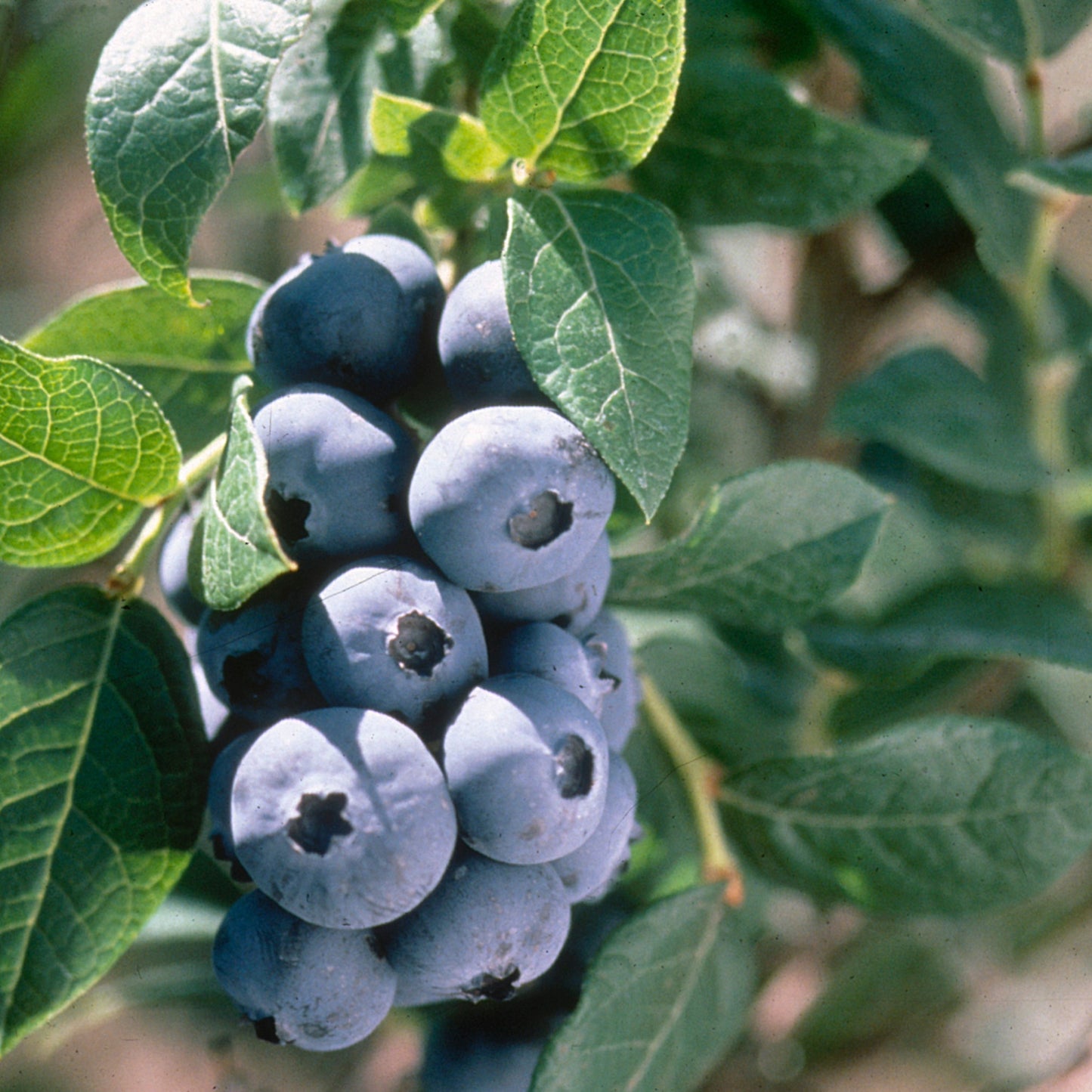Vaccinium corymbosum 'Elliott'
'Elliott' Blueberry – Vaccinium corymbosum 'Elliott'
'Elliott' Blueberry – Vaccinium corymbosum 'Elliott'
Exposure
- Sun
- Partial shade
Rusticity
Bloom time
- June
- Very late harvest (August-September)
- Very high yield
- Self-pollinating variety
- Firm fruit, perfect for baking
- Late bloom avoids frost
'Elliott' blueberry is the top choice for extending the harvest season to the very end of summer. Renowned for its high yield and its ability to produce fruit on its own, it is a shrub that is both productive and ornamental. Its pinkish spring flowers give way to an abundance of firm and flavourful fruit.
The Harvest: Production and Flavour
The major asset of 'Elliott' is its late and generous productivity. A mature plant can produce up to 10 pounds of fruit! The harvest extends over several weeks, from late August to September, allowing you to enjoy fresh blueberries long after other varieties have finished.
- Harvest Period: August, September
- Visual Description: The berries are medium-sized (about 1.25 cm / 0.5 inches), with a classic blue colour and a small, dry scar, which indicates good shelf life.
- Flavour Profile: The flesh is very firm. Its flavour is a pleasant balance of sweet and tart notes. For maximum sweetness, it is important to let the fruit ripen completely on the plant.
- Culinary Uses: Excellent for fresh eating once fully ripe, its great firmness also makes it ideal for baking. It holds its shape well in pies, cakes, and muffins, and it freezes very well.
Planting Guide
To ensure a successful planting, follow these key steps:
- The Ideal Location: Choose a site in full sun to maximize fruit production, although it tolerates light part-shade. Ensure the spot is sheltered from strong winds.
- Soil Preparation: This is the crucial step. 'Elliott' blueberry requires very acidic, loamy, and well-drained soil. Avoid any soil containing lime. When planting, create an "amendment pocket" by mixing your garden soil in equal parts (50/50) with a potting mix for acid-loving plants.
- Planting: This shrub does not like its roots to be disturbed. Handle the root ball with care. Dig a hole twice as wide as the root ball and place the plant so that the top of the root ball is level with the surrounding ground. Fill with the acidified soil mixture.
- Pollination:
- Type: Self-pollinating.
- Suggested Partners: Although it will produce fruit on its own, the presence of another late-season blueberry like 'Last Call' will increase the size and quantity of the berries. This is optional, not required.
Care Guide
- Watering: Maintain consistently moist soil, but never waterlogged, especially during heatwaves. A mulch at the base of the plant is highly recommended.
- Fertilizing: In the early spring, apply a fertilizer for small fruits or a natural garden fertilizer (like 4-5-7 Botanix Natur).
- Pruning: Adequate pruning is important to maintain the plant's vigour and the size of the berries. Prune during the dormant season to remove dead wood and thin out the centre of the bush.
- Protection:
- From Birds: As the fruits begin to ripen, cover your plants with protective netting.
- Winter: Very hardy, standard winter protection (mulch, snow fence) is sufficient in its hardiness zone.
Plant details
Dimensions
Dimensions
Characteristics
Characteristics
Habit:
- Bushy
- Upright
Flowering colours:
- White
- Pink
Plant needs
Plant needs
Watering:
- Consistent moisture
Maintenance:
- Medium
Soil requirement:
- Acid
- Loamy
- Well-drained
Features
Features
Resistance:
- Frost (if protected)
- Cold
Attract:
- Birds
- Butterflies
- Pollinators
Use:
- Fruit hedge
- Flower bed
- Specimen
- Mass Planting
Attribute:
- Self-Pollinating
- Late harvest










